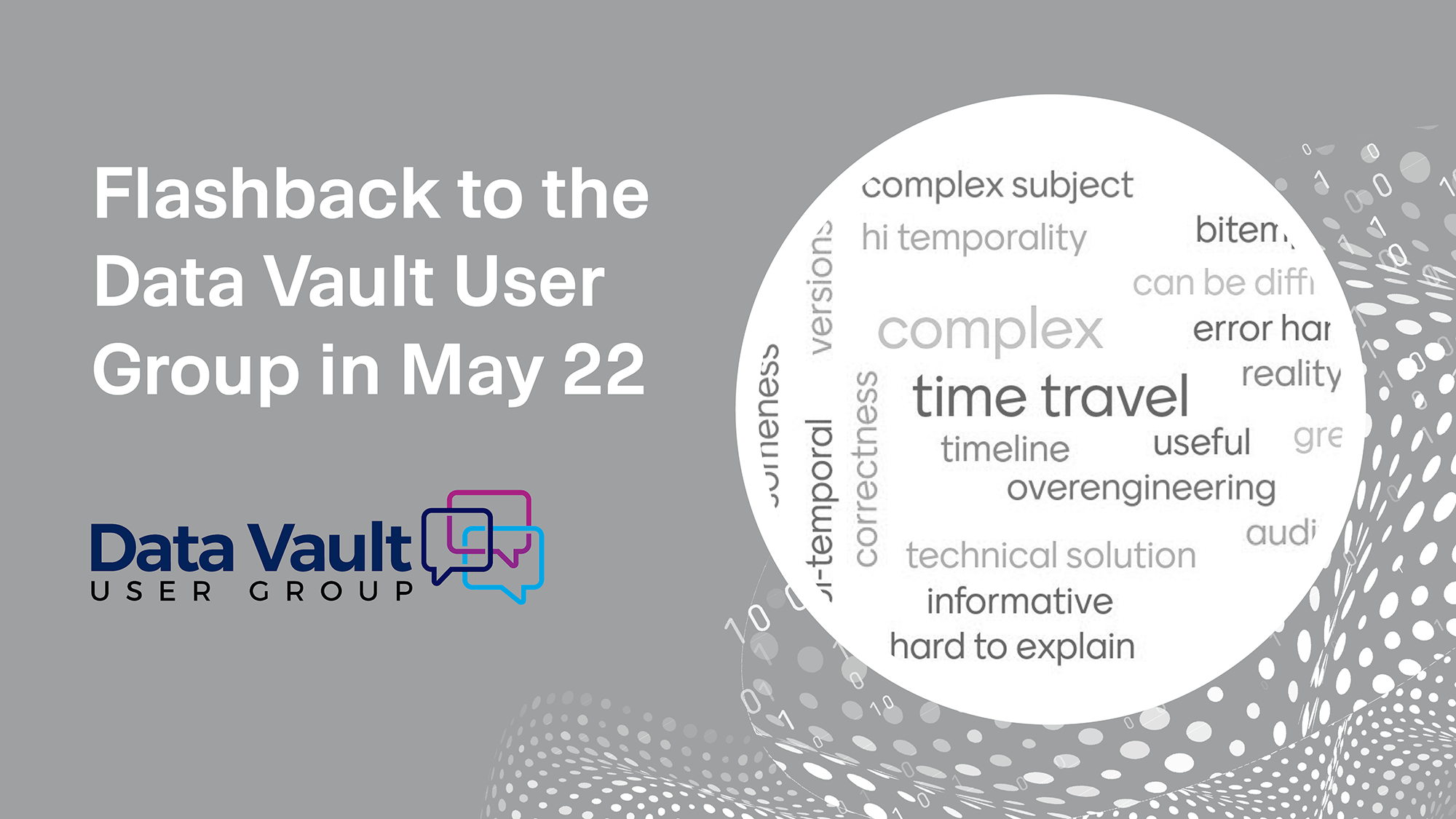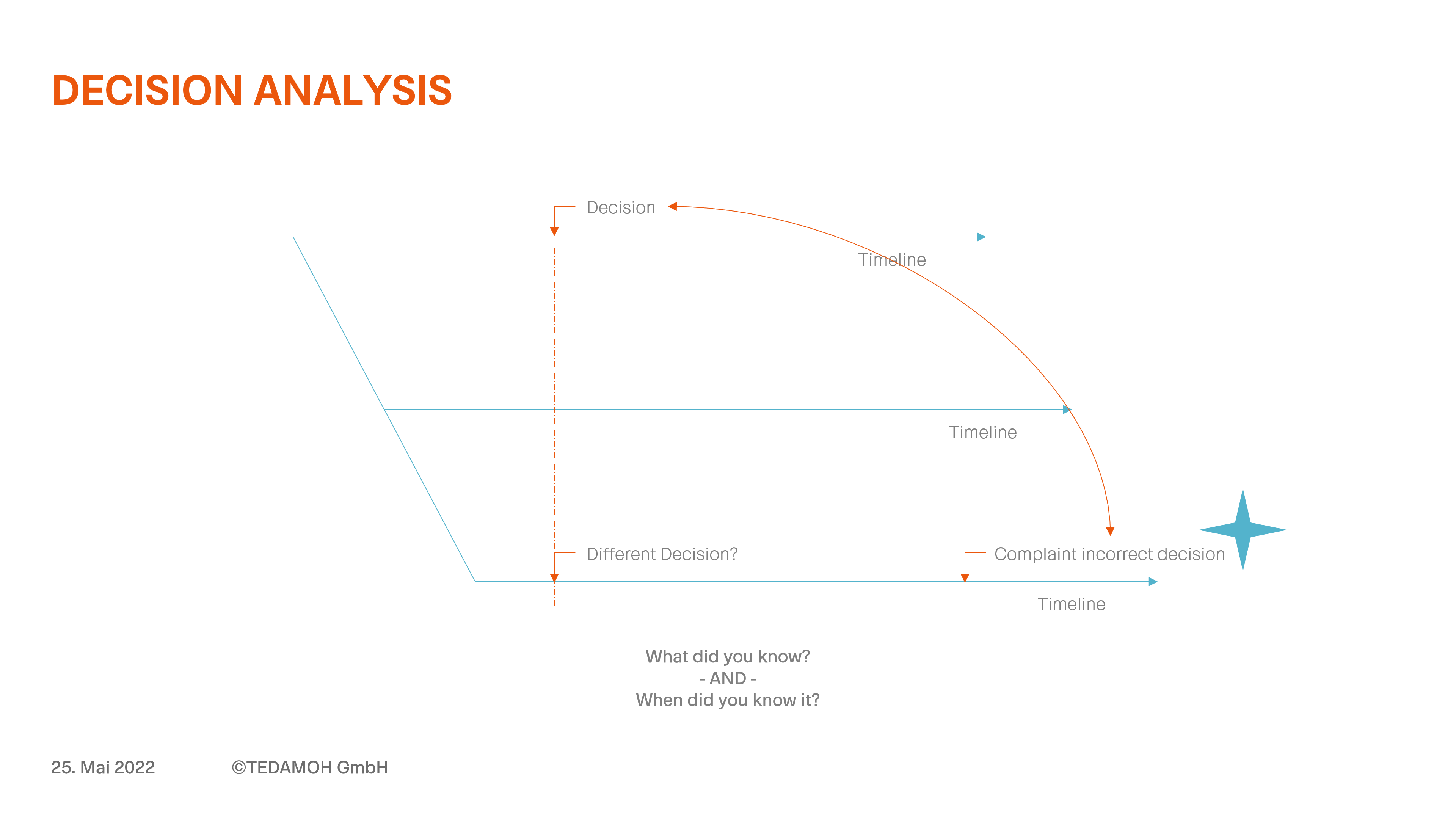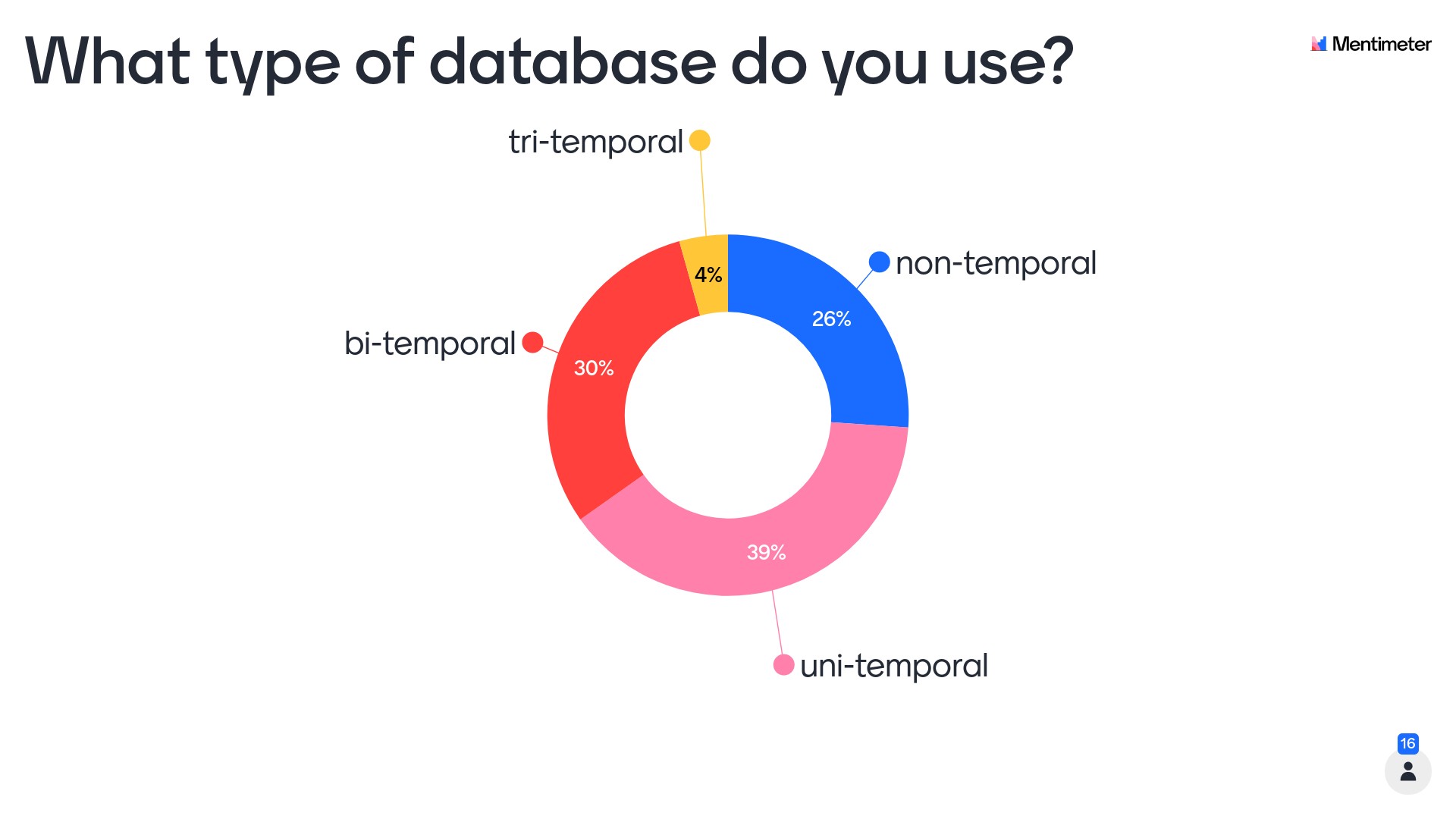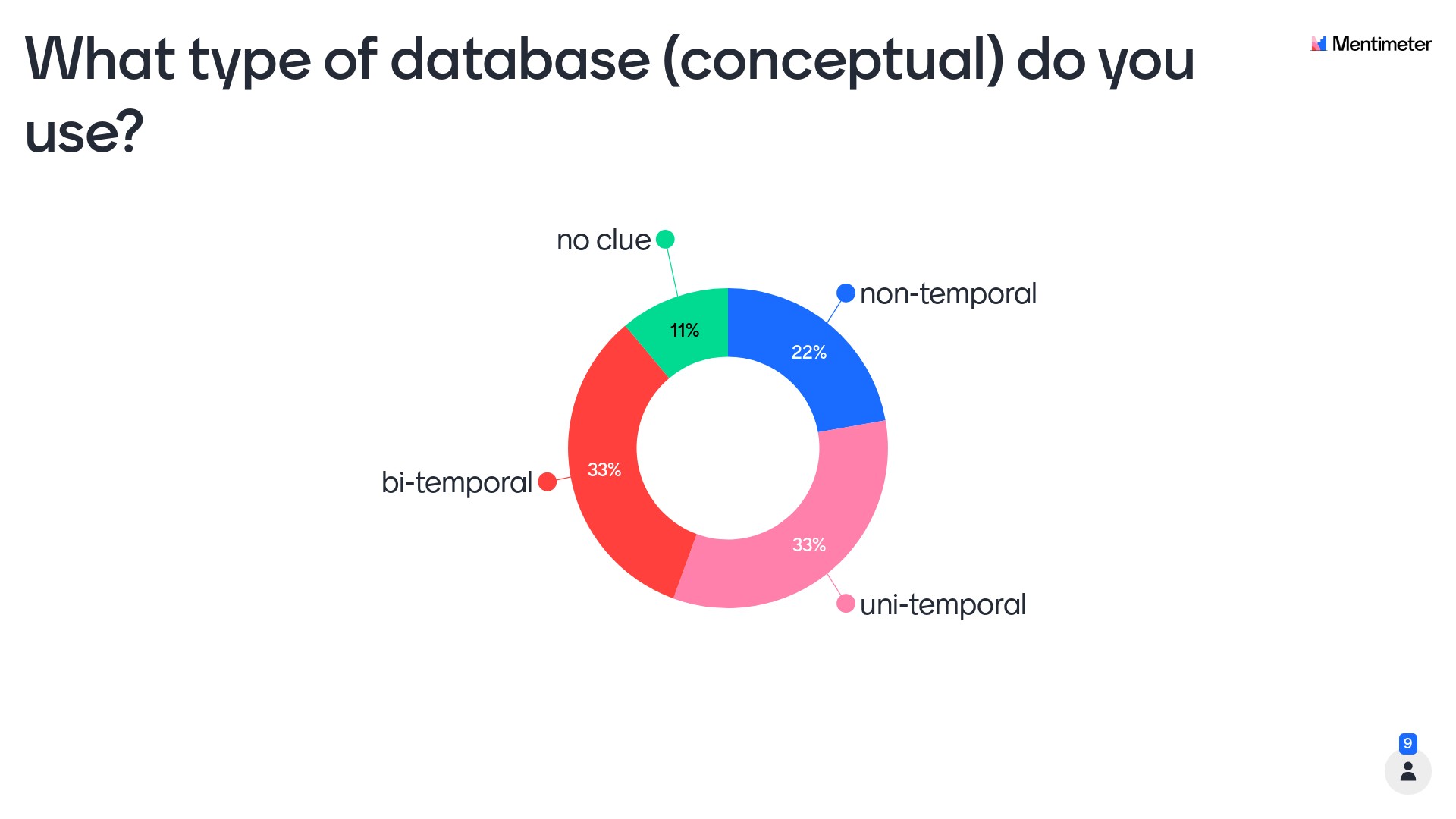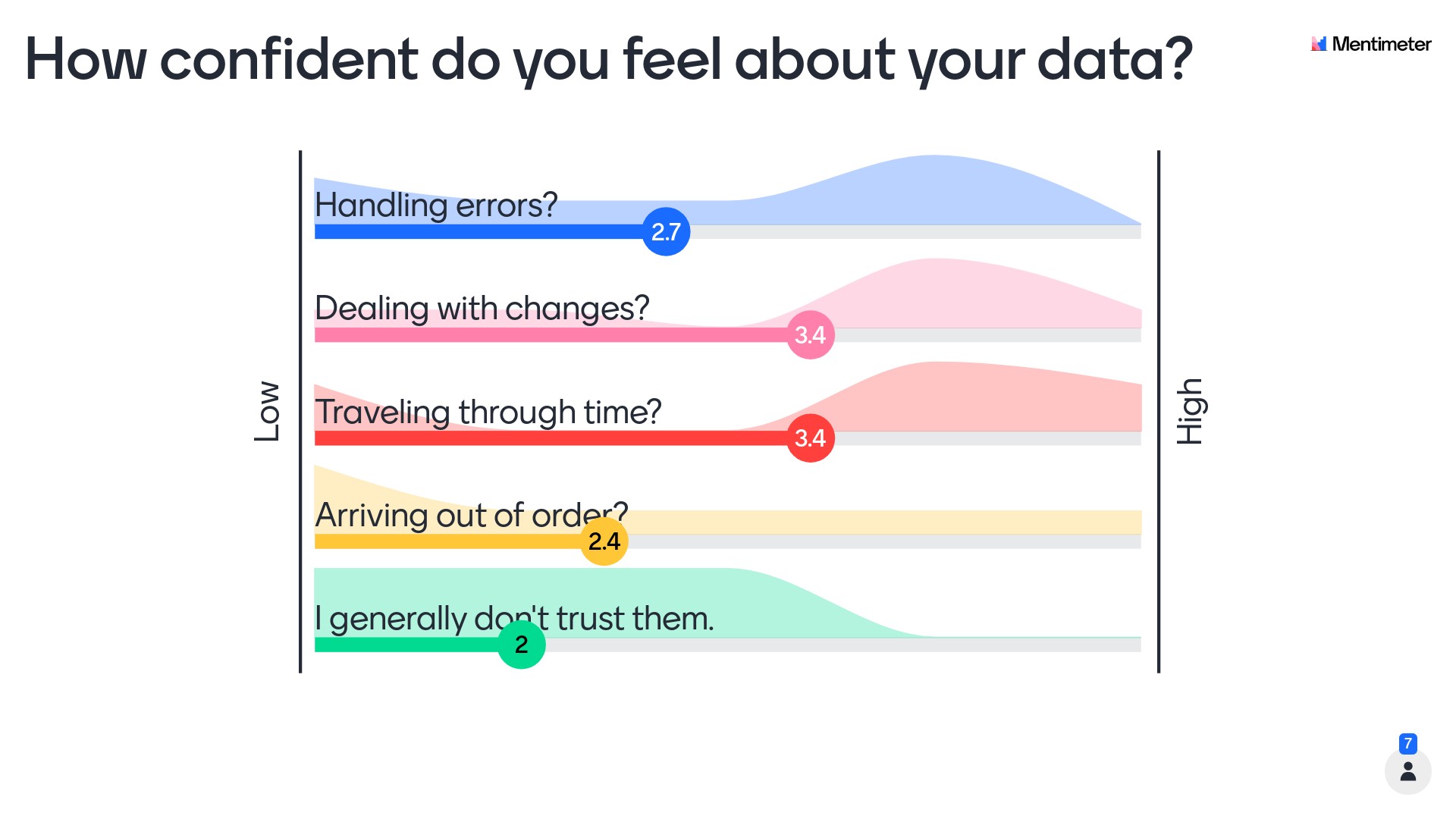Last week I had the opportunity to present online at the Data Vault User Group about temporal data: Who, how, what - why bitemporal data? Who does not ask will not be wise!
Fantastic talk and our audience were really engaged. Much appreciated. - Data Vault User Group host
The focus of the presentation was on why an organization actually needs temporal data from a business perspective. Many data specialists talk about temporal data in terms of implementation, but rarely why a project team should implement the functionalities for temporal data. Maybe because this question is not always easy to answer?
In the presentation, I used several temporal use cases to provide answers as to why temporal data is necessary and often even mandatory in different scenarios.
An interesting example is the analysis of decisions made in the past. With today's knowledge and data, one might have decided differently than with the knowledge and data available at the time of the decision.
With temporal data, those responsible can –in case of doubt as to whether the past decision was correct– check what was known at the time of the decision – or not. And thus eliminate or confirm accusations.
One participant summarized this temporal example in the presentation as follows:
So, the universe in "Back to the Future" is in other words bi-temporal, given that the Delorean can travel between timelines. Participant quote
That sums it up quite well, I think.
After the examples of temporal data, the talk gave an insight into existing technologies (databases) that have already implemented temporal functionalities. These are, compared to the amount of existing database technologies, as you can probably imagine, only very few.
After my talks I often do a short survey among the audience. This is certainly not representative and influenced by the talk or the audience (who are interested in the topic anyway).
Nevertheless, it is interesting to see whether and how companies use temporal data. It is also interesting to see how the participants rate the confidence they have in their own data. The following graphics are from different presentations:
Thanks !!! Interesting topic and GREAT presentation with visual charts !!! Participant quote
I took away some intriguing questions (in the original sound) from the discussion with the engaged audience:
- How complex would you say a bi-temporal implementation is, compared to a uni-temporal or non-temporal?
- Is it fair to say we require two timestamp fields to implement bi-temporal structure, transaction time and data arrival time?
- If your data has 3 or 4 temporal dimensions, is it better to use a uni or bi temporal DB?
- Let's suppose that you implement bi-temporal data vault satellites. How do you model/load the dimensions in a data mart, using bi-temporal or uni-temporal? or create different dimensions using different timelines?
The answers to this, but also the presentation of databases with temporal functionalities, would go beyond the scope of this flashback. More about that in the planned new blog series on temporal data. You definitely have to stop by again*.
So long,
Dirk
* If you don't want to miss any news, our Newsletter might be interesting for you..

